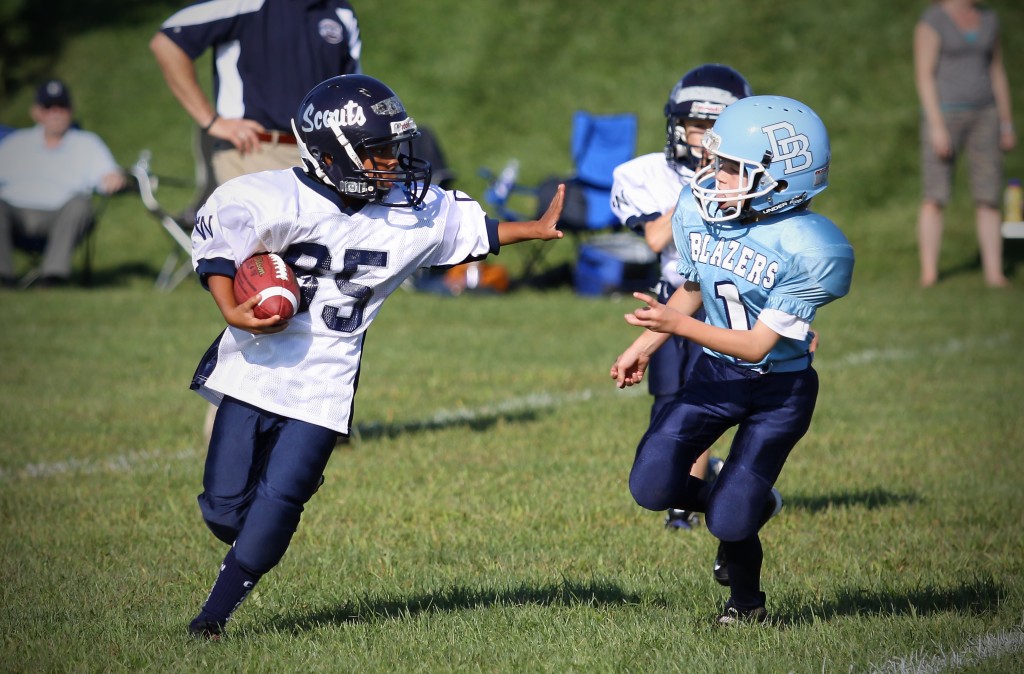There is general agreement that the number of hours spent in deliberate practice and training positively correlates with level of achievement in both individual and team sports; whether this intense practice must begin during early childhood and to the exclusion of other sports is a matter of debate. Sports specialization is defined as intense, year-round training in a single sport with the exclusion of other sports.Variations on this general theme exist, with disagreement on what volume of training constitutes “intense” and whether year-round participation or exclusion of all other sports is essential for classifying an athlete as specialized. Some advocate that a minimum volume of training is required to meet the definition,while others define specialization as simply limiting participation to a single sport on a year-round basis, regardless of training volume.
Sports specialization is intense training in 1 sport while excluding others. Sports specialization in early to middle childhood has become increasingly common. While most experts agree that some degree of sports specialization is necessary to achieve elite levels, there is some debate as to whether such intense practice time must begin during early childhood and to the exclusion of other sports to maximize potential for success.
It’s time to put the myths to bed. In reality, kids only stand to gain from playing multiple sports. Here’s why:
Specializing actually leads to greater chance of injuries.
Instead of sharpening their overall athleticism in a well-rounded way, specialized athletes are repeating the same movements with the same sets of muscles every day of the week. This has led to a dramatic rise in the need for Tommy John surgery and reconstructive surgery of elbow ligaments—to cite just two examples.
Sports skills and athletic movements transfer.
Jumping for a basketball works the same muscles swimmers use to push off the starting blocks and develop a strong kick. A full 87 percent of 2015 NFL draft picks were multi-sport athletes, and the average number of multi-sport athletes in the NFL hovers around 70 percent. It’s not surprising when you consider that quickness, running, jumping, agility, throwing and countless other moves are all transferable skills.
Multi-sport athletes learn to compete.
Each sport requires its own unique levels of focus and resiliency. Some games, like baseball, are more drawn out and require long-term attention punctuated with quick action. Other sports are all about pacing and endurance. The broader the exposure young athletes get to these different conditions, the better. Resiliency and focus, too, are transferable skills.
Multi-sport athletes have a greater sports I.Q.
They develop a feel for any game they are playing. Ever heard about football players taking ballet classes? This helps not just to transfer athletic movements, but also to enhance their appreciation for different types of movements. Thanks to cross-training, multi-sport athletes are overall more creative and less mechanical in their approach.
Burnout becomes less frequent in multi-sport athletes.
It doesn’t take long for kids to fizzle from going to five must-do showcase events and traveling every weekend in the summer. Ultimately, they stop enjoying the process. The balance and variety that comes from playing multiple sports offers keeps young athletes alert, engaged and, literally, on their toes.
Multi-sport athletes are better teammates.
They’ve got lots of experience at it! They’re used to interacting with a variety of teammates and coaches within different contexts. This is priceless training for athletics of all sorts and life.
Remember, too: grit, tenacity and the will to compete are traits that transfer across all sports. In applying the essential lessons from one sport to others, kids are better athletes overall. Cultivating these while building character is the true purpose of youth sports, which above all serves as a metaphor for life.



5